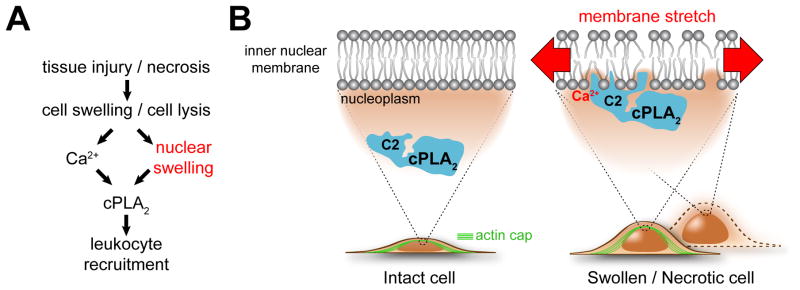Figure 7. Proposed regulatory scheme.
(A) Simplified pathway diagram. Pathological tissue perturbations such as wounding, ischemia or blunt trauma cause cell swelling and lysis. Both events trigger nuclear swelling. Nuclear swelling is an important second signal, besides Ca2+, for cPla2-dependent leukocyte recruitment.
(B) Hypothetical mechanosensing scheme. Nuclear swelling, probably through stretch-induced changes in lipid packing, facilitates hydrophobic insertion of the enzyme into the bilayer core (via its C2-domain), which is required for its activity. In intact cells, nuclear swelling is initiated by cell swelling and restricted by a nuclear actin cap, and maybe other F-actin structures (for example, cortex, TAN lines (Luxton et al., 2010), etc.). In permeabilized cells, actin filaments are gone and nuclei completely expand in response to loss of cytoplasmic macromolecules. Like the nuclear lamina, F-actin probably contributes to nuclear envelope stabilization, dampening forces that act on the nuclear membrane. Thereby it counteracts swelling-induced cPla2 activation.

